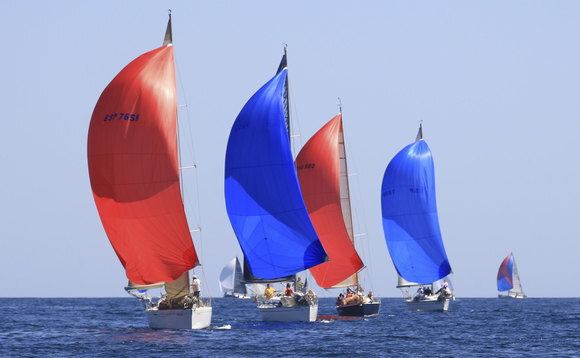
European funds enjoying secondaries tailwind

With secondaries activity expected to hit another all-time high this year, European funds are proving particularly popular with investors. Greg Gille looks at who is in favour
The secondaries market had a spectacular year in 2014 as investors were eagerly chasing yield, with estimates putting the overall level of dealflow in the region of $35bn – setting another high-water mark following an already buoyant 2013. With most of the factors that drove last year's uptick still at play, 2015 should not disappoint – market estimates forecast overall transaction volume to settle somewhere in the $38-45bn range by year-end.
In a development that will most likely please both European GPs and their investors, it would appear European funds are currently attracting the lion's share of interest in this market. Secondaries and fundraising social platform Palico recently published its latest wishlist – highlighting the funds that LPs on the platform are most interested in buying into on the secondaries market.
Palico's secondary wishlist reveals that of the top 10 most-requested funds, half are specifically focused on the European market. In fact, the top four funds on the list all focus on the continent and read like a who's who of high-profile players, confirming the strength of some of Europe's established managers.
EQT tops the list with the EQT IV fund, a 2004-vintage mid-market vehicle that closed on €2.5bn. Following the Swedish manager are Carlyle with the 2006 Europe Partners III fund, 3i's 2006 Eurofund V and Riverside's Europe I, a 2008 small-cap vehicle. PAI Partners, another high-profile European GP, follows in seventh place with its once-beleaguered 2008 Europe V fund.
Do the maths
Currency movements, which have seen the euro tumble against the dollar since the middle of last year, are certainly playing their part. The obvious effect is that European fund stakes on the secondaries market now offer much better value for US buyers. "The current popularity of secondary transactions for European funds is largely explained by the sharp fall in the euro and the belief that European economic recovery is gaining momentum," says Mathieu Dréan, managing partner and global head of secondaries at placement agent Triago. "US investors account for the lion's share of ultimate buyers, since many are convinced European assets represent a better bargain today – both on the primary and secondary market – given the relative strength of the dollar. The appetite of US-based investors for European funds is all the more pronounced following years when many in the US avoided European investments because of worries about the euro's stability and pricing, and the region's slow growth."
But a denominator effect is also at play, explains Sunaina Sinha, managing partner at secondary market adviser Cebile Capital: "If, as an LP, you had a large European secondaries portfolio, this allocation is now mathematically less significant than it was a few months ago as a result of the currency movement. These investors are trying to increase their European exposure to rebalance their portfolios, and this is contributing to demand."
Besides the currency factor and Europe's improved economic prospects in the eyes of US LPs, Sinha also highlights the intrinsic merit of the best local managers. "Some of the largest EU buyout funds remain heavily sought after because they have been performing well, and some in the mid-market are also in demand. EQT and IK are always going to be on that list, where you'll also find the likes of Herkules or BC Partners," she says. This is compounded by the fact some of these managers have been fundraising recently or are currently on the trail, which always tends to drive interest for older vintages. "A lot of buyers tie into existing fundraising cycles, so it is no surprise to see strong interest for GPs currently on the road, such as EQT, for instance. With that in mind, we also see strong demand for early secondaries in recent funds raised by CVC Capital Partners or Cinven, for example," adds Sinha.
British invasion
While the best GPs are always likely to attract interest purely on performance, not all European funds are created equal. Even if the currency factor is less prominent there, UK funds, in particular, are sought after. "Outside the eurozone, but still within Europe, we are seeing exceptional demand for UK funds – more transactions are happening in the UK than in any other European market. While the US currency's appreciation against the pound has been an operative factor, other reasons are more important when it comes to the popularity of UK-focused secondary transactions," says Dréan.
The country's economic growth certainly doesn't hurt, nor does the fact that Britain is by far the most active exit market in Europe at the moment. "This means investors can expect returns more quickly and at steeper mark-ups to carried net asset value than in other markets," adds Dréan.
Sinha also highlights the popularity of the UK market, and draws up a three-tier map of the European block: "Geography-wise, north and western Europe is top of the list with countries such as Germany and the UK, as well as the Benelux and Nordic regions. France, Spain and Italy make up the second tier – CEE doesn't really seem to be in everyone's sweet spot at the moment. When it comes to deal strategies, buyout is king, followed by growth capital and then venture," she says.
Although this would seem to very closely match fundraising trends on the primary side, Dréan notes secondary and primary strategies can differ somewhat at the investor level, which also adds to the lustre of secondaries at present: "The ability to due diligence assets means that investors are also buying European secondaries in regions or specialties where they would not necessarily be comfortable investing in classic blind-pool primary fundraisings."
A glance at pricing information for secondaries deals compiled by Triago further confirms the rising demand for European funds. Average top pricing for large European buyout funds showed a 2% discount to net asset value in 2014, while similar funds in the US were trading at a 1% premium. In the first quarter of this year, the US premium faded away while European funds were now trading at full net asset value. Of course, this is all about averages – according to another source, a significant number of the top EU funds are now trading at a premium. With estimated secondaries dry powder currently sitting in the unprecedented region of $60-70bn, it could take more than a currency readjustment to take the shine off the best European funds.
Latest News
Stonehage Fleming raises USD 130m for largest fund to date, eyes 2024 programme
Sponsor acquired the public software group in July 2017 via the same-year vintage Partners Group Global Value 2017
Stonehage Fleming raises USD 130m for largest fund to date, eyes 2024 programme
Czech Republic-headquartered family office is targeting DACH and CEE region deals
Stonehage Fleming raises USD 130m for largest fund to date, eyes 2024 programme
Ex-Rocket Internet leader Bettina Curtze joins Swiss VC firm as partner and CFO
Stonehage Fleming raises USD 130m for largest fund to date, eyes 2024 programme
Estonia-registered VC could bolster LP base with fresh capital from funds-of-funds or pension funds








